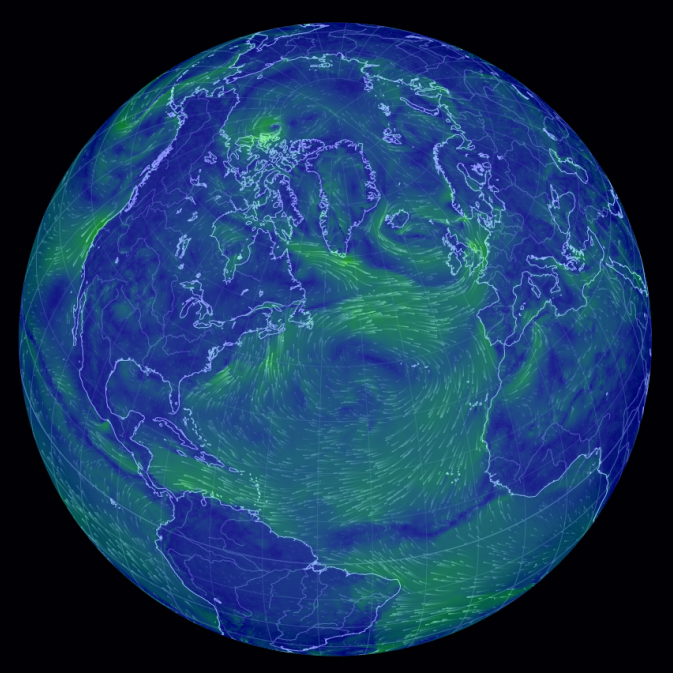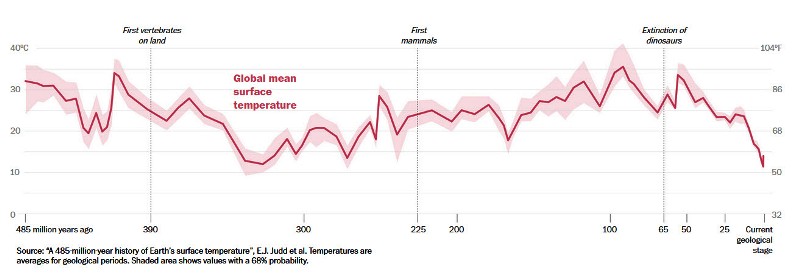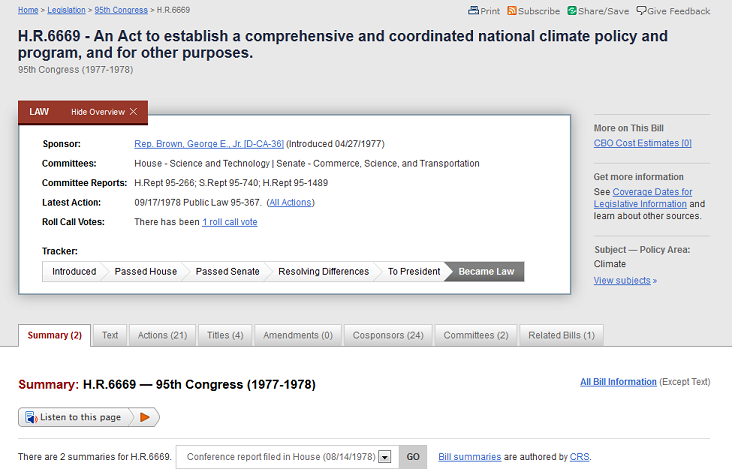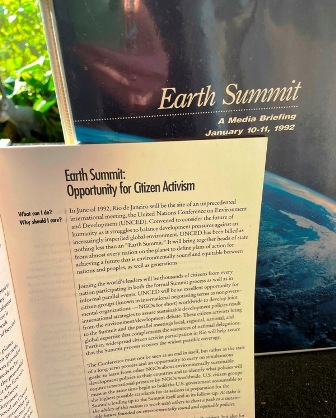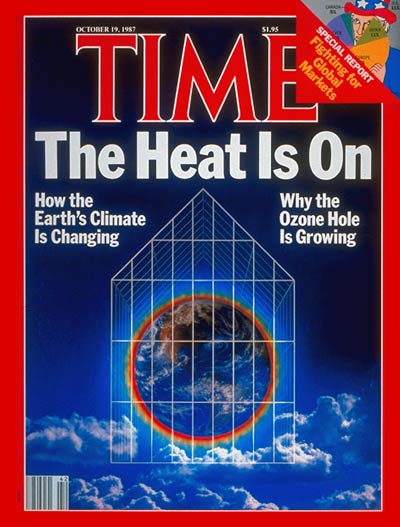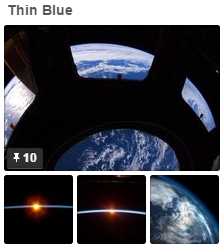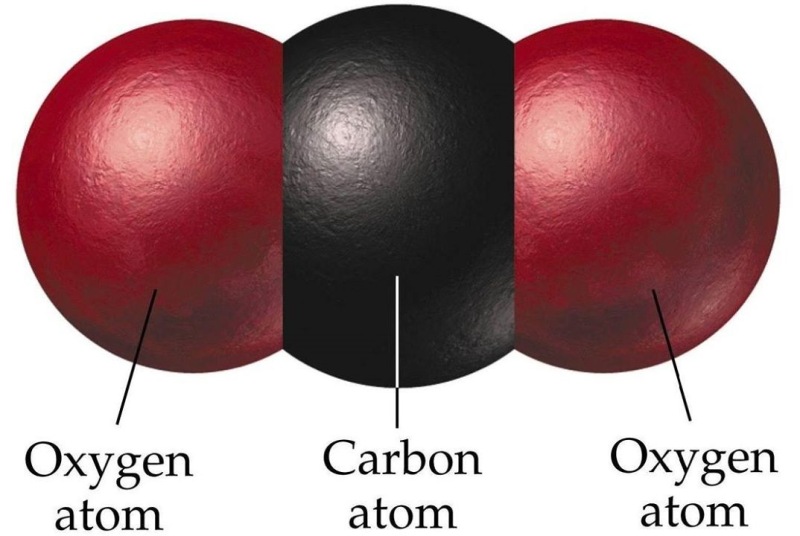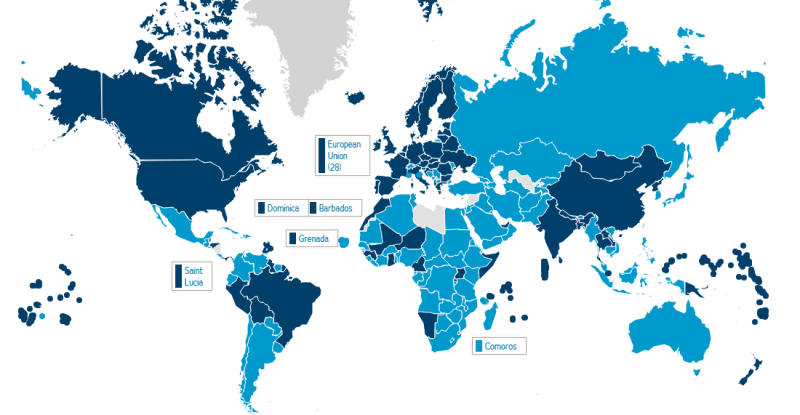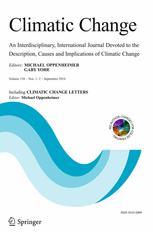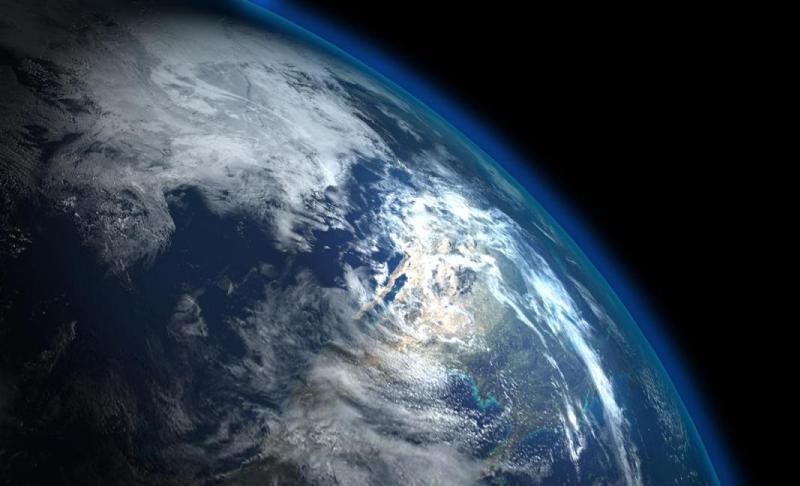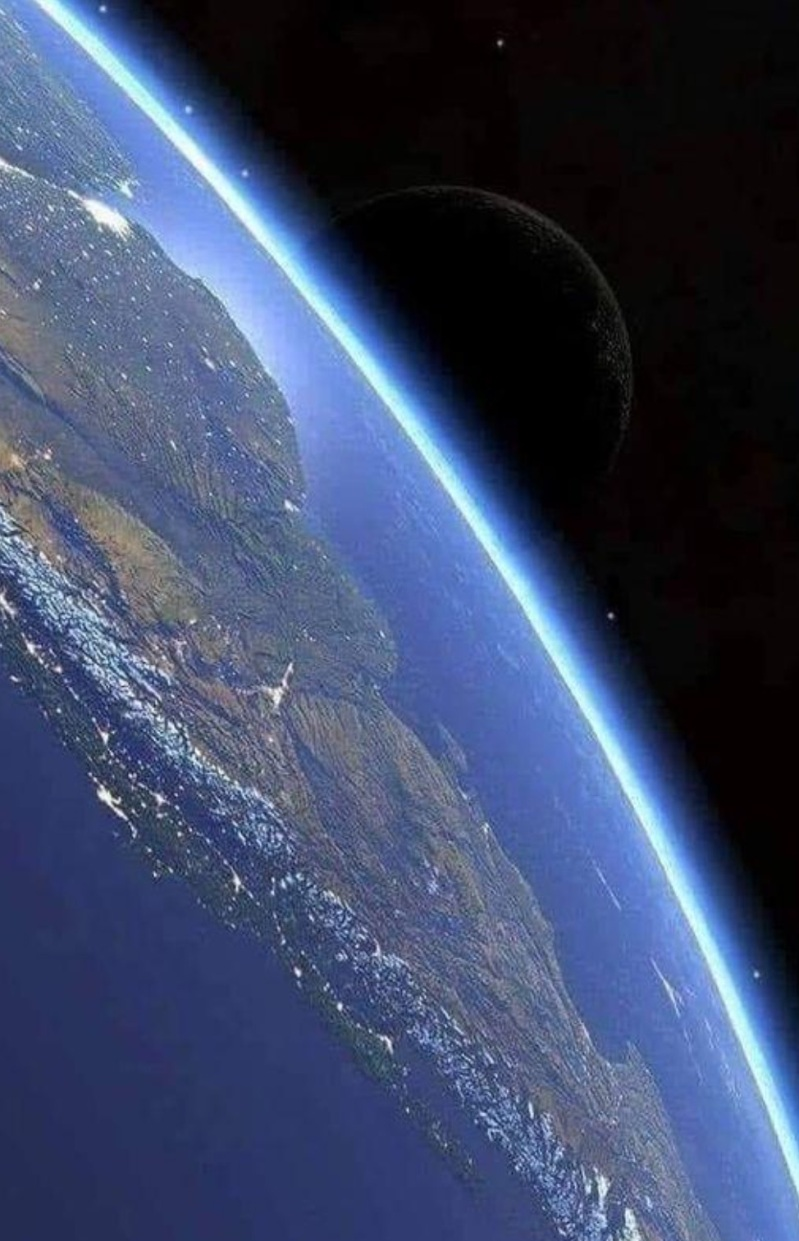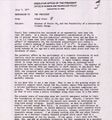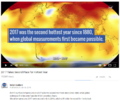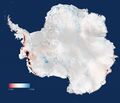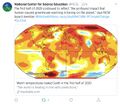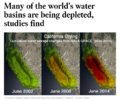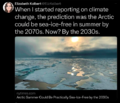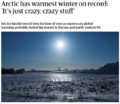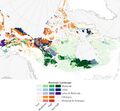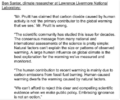Category:Climate Change: Difference between revisions
Siterunner (talk | contribs) No edit summary |
Siterunner (talk | contribs) No edit summary |
||
| (76 intermediate revisions by the same user not shown) | |||
| Line 1: | Line 1: | ||
[[File:Featured.png]] | |||
<big>'''GreenPolicy360 & Strategic Demands: Strategic Focus on #EnvironmentalSecurity'''</big> | |||
'''[https://greenpolicy360.net/w/New_Definitions_of_National_Security New Definitions of National Security] are necessary to meet the Challenges of our Era''' | |||
Global Warming Terminology to the Climate Change Term, the First National Climate Change Plan to International Climate Conferences and Summits, our GreenPolicy360 Reports Are Tracking the Climate Challenge -- for 50+ Years | |||
<big>Here we are, [http://www.planetcitizens.org '''Planet Citizens'''] in action</big>.... | |||
Take a quick look at our ToC -- https://greenpolicy360.net/w/Table_of_Contents_(ToC)_GreenPolicy360 | |||
Consider joining in, making a positive difference, Visit our GreenAction Intro -- https://www.greenpolicy360.net/w/GreenAction | |||
Where are you? Review GreenPolicy360's National Climate Plans database -- https://greenpolicy360.net/w/National_Climate_Plans | |||
:[[File:Earth conditions dynamic map.png]] | |||
:Planet Citizens, Where Are You on Earth! | |||
🌎 | |||
<big>'''Scientists have captured Earth’s climate over the last 485 million years'''</big> | |||
''A history of wild temperature shifts and offered a warning on the consequences of human-caused warming'' | |||
* https://wapo.st/4dc2CTV (gift article) | |||
* https://www.washingtonpost.com/climate-environment/2024/09/19/earth-temperature-global-warming-planet/ | |||
(Science) ''What was Earth’s temperature tens to hundreds of millions of years ago? The planet has gone through different periods, some with extensive polar ice caps and others being completely ice-free. Estimating past global temperature is important for understanding the history of life on Earth, for predicting future climate, and more broadly, to inform the search for other habitable planets.'' ... | |||
''Judd et al. have brought a powerful new tool to this task: data assimilation. They combined a large set of climate model simulations at different global temperatures across the last 485 million years with the oxygen isotope dataset as well as with other less frequently sampled temperature indicators such as temperature-sensitive organic molecules. Joining the model and the geological data enabled the authors to account for regional variations in predicted temperature. For example, a sample from a polar region was compared to climate model predictions in the same region. This produces a more accurate estimate of the global average temperature of Earth over time.'' | |||
* https://www.science.org/doi/10.1126/science.ads1526 | |||
[[File:Timeline-climate-change-history-485-million years.jpg]] | |||
''September 2024'' | |||
{WaPo) ''An ambitious effort to understand the Earth’s climate over the past 485 million years has revealed a history of wild shifts and far hotter temperatures than scientists previously realized — offering a reminder of how much change the planet has already endured and a warning about the unprecedented rate of warming caused by humans.'' | |||
''The timeline, published Thursday in the journal Science, is the most rigorous reconstruction of Earth’s past temperatures ever produced, the authors say. Created by combining more than 150,000 pieces of fossil evidence with state-of-the-art climate models, it shows the intimate link between carbon dioxide and global temperatures and reveals that the world was in a much warmer state for most of the history of complex animal life.'' | |||
''At its hottest, the study suggests, the Earth’s average temperature reached 96.8 degrees Fahrenheit (36 degrees Celsius)... The revelations about Earth’s scorching past are further reason for concern about modern climate change, said Emily Judd, a researcher at University of Arizona and the Smithsonian specializing in ancient climates and the lead author of the study. The timeline illustrates how swift and dramatic temperature shifts were associated with many of the world’s worst moments — including a mass extinction that wiped out roughly 90 percent of all species and the asteroid strike that killed the dinosaurs.'' | |||
''“We know that these catastrophic events … shift the landscape of what life looks like,” Judd said. “When the environment warms that fast, animals and plants can’t keep pace with it.”'' | |||
''At no point in the nearly half-billion years that Judd and her colleagues analyzed did the Earth change as fast as it is changing now, she added: “In the same way as a massive asteroid hitting the Earth, what we’re doing now is unprecedented.”'' | |||
🌎 | |||
: <big>'''[[Thin Blue Layer]]'''</big> | |||
:[[File:Thin Blue.jpg]] | :[[File:Thin Blue.jpg]] | ||
: [[Look at how thin our atmosphere is]] | |||
: <big>[http://www.planetcitizens.org '''Planetcitizens.org'''] | [https://www.greenpolicy360.net/w/Climate_News '''Climate News'''] | [https://www.greenpolicy360.net/w/New_Definitions_of_National_Security '''New Definitions of National Security''']</big> | |||
GreenPolicy360: | |||
<big><big>'''When climate change came 'on the radar' '''</big></big> | |||
'''GreenPolicy360 journeys across 50+ years of the modern environmental movement''' | |||
This story is now 50 years plus old and at GreenPolicy360 we have been attempting to bring to light many of the salient, and key moments of the history and crucial-to-know events that have led to today's activism dealing with climate change. The origins of earth science, atmospheric science, the environmental protection movement, the technology to measure and monitor earth system and dynamic change have brought us to today. | |||
Thank you for visiting us and please feel free to click through our content and links. We are an open-source MediaWiki platform after all and our originating model was to share 'green best practices' worldwide. Climate change and climate policy, realization of the problems bring us to climate action. | |||
'''[[Environmental protection]]''' with green activism/politics/education is a story that has gone on over decades, from the 1960s on. With GreenPolicy360 we look back to joining in ... involved directlyn with the first [[Earth Day]] (via Senator Gaylord Nelson and Representative George Brown in the envisiong, planning and organizing) and with Earth System Science initiatives, especially to collect data through new NASA and NOAA programs, to identify the extent of climate change. | |||
<big>'''A First [[Earth Day]]'''</big> | |||
: Being there with George's assist, organizing | |||
::Youth-energy eco 'Teach-ins' and events across the nation | |||
::: * https://www.greenpolicy360.net/w/Category:Earth_Day | |||
:::: * https://www.greenpolicy360.net/w/Earth_Day | |||
We are, as we say, 'planet citizens, planet scientists'. We look to sound science to guide climate policy solutions | |||
'''[[Climate Problems, Climate Solutions]]''' | |||
* https://www.greenpolicy360.net/w/Climate_Problems,_Climate_Solutions | |||
* https://www.greenpolicy360.net/w/Planet_Citizens,_Planet_Scientists | |||
* https://www.greenpolicy360.net/w/Category:Climate_Policy | |||
* https://www.greenpolicy360.net/w/Category:Earth_System_Science | |||
* https://www.greenpolicy360.net/w/Category:Earth_Science_from_Space | |||
* https://www.greenpolicy360.net/w/File:Good_science_needs_good_data_.png | |||
[https://www.greenpolicy360.net/w/File:Corita_action.jpg <big> '''Get with the action'''</big>] | |||
It was time to step up, go to work and do our best to make a positive difference. Earth is, as we say, in human hands. | |||
Here are a number of pages and sites to explore as you 'get with the action': | |||
Start with "Earthrise", and the beginnings of the Modern Environmental Movement, and the first "Earth Day"... | |||
* https://www.greenpolicy360.net/w/Earthrise | |||
[https://greenpolicy360.net/images/1969_beginnings_of_the_modern_environmental_movement.pdf <big>'''Beginnings of the Modern Environmental Movement'''</big>] | |||
:<small><small>* https://greenpolicy360.net/images/1969_beginnings_of_the_modern_environmental_movement.pdf </small></small> | |||
'''[[Generation Green]]'''... '''in the making, [[Going Green]]''' | |||
: * https://www.greenpolicy360.net/w/Earth_Day_Memories_on_the_50th_Anniversary | |||
<big><big>'''Flashback to 1978, Climate Action Memories'''</big></big> | |||
: GreenPolicy360 Siterunner: Our friend George steps up in the U.S. Congress | |||
<big>[[George E. Brown Jr]]</big> | |||
* https://www.greenpolicy360.net/w/George_E._Brown_Jr | |||
<big><big>The First National Climate Act, Historic Work</big></big> | |||
GreenPolicy360 Siterunner / SJ Schmidt: The beginnings of modern environmental and climate science can be traced to the 1960s and 1970s. The U.S. National Academy of Sciences played a key role in laying a foundation of scientific reports and data.''' | |||
[http://www.greenpolicy360.net/mw/images/Energy_and_Climate_Report%2C_1977%2C_National_Academy_of_Sciences.pdf '''Energy and Climate Report, 1977, National Academy of Sciences / 175 pp. / PDF via GreenPolicy360'''] | |||
Rep. George Brown took the findings of the 1977 Energy and Climate Report from the Academy of Sciences and made the science actionable. In a historic moment, he proposed and drafted the legislation of the first U.S. National Climate Program and shepherded its passage in 1978. | |||
This first federal program established to study and assess scientifically the issues and risks of human-caused climate change became a foundation for comprehensive initiatives, with an array of new Earth Science missions led by NASA and NOAA, the EPA and USGS. | |||
''GreenPolicy360 is | |||
:[[File:US Public Law 95-367.png]] | |||
| |||
🌎 | |||
<big><big>'''1992 -- Earth Summit''' </big></big> | |||
: <big>'''Launch of Annual International Climate Conferences'''</big> | |||
:: [[File:Earth Summit 1992-s.png|link=http://www.planetcitizens.org]] | |||
:: [https://www.greenpolicy360.net/w/File:Earth_Summit_1992.jpg '''Earth Summit (1992)'''] | |||
🌎 | |||
It's no ride in the park looking back at some 50+ years of environmental protection work. The obstacles were many, the climate change denial purposeful, and the dis- and mis-information pervasive. Those of us who were developing the field of climate science were, although we didn't describe it as such, creating a story arc of the climate change movement. The genesis of climate science was becoming a key 'atmospheric science' question to Congressman George E. Brown in the 1960s and I was, as a high school student, becoming a political follower of my representative's work. George went on to be a 'mover and shaker' in Congress and leader, as a trained physicist and practicing engineer, in the science and policy of climate. His work is essential in understanding how climate change powered up a constellation of NASA/NOAA/USGS programs and missions, many of which were the first of their type gathering digital data and earth science imaging. I was fortunate, as an environmental activist, to be along for the ride over the years until George's untimely passing in 1999. | |||
Thank you George for all you did, the perseverance, the vision, the hard work. You made a world of difference, a positive difference that goes on and on (and you changed my life) -- https://www.greenpolicy360.net/w/Earth_Day_Memories_on_the_50th_Anniversary | |||
To our GreenPolicy360 readers, please take a look, a close look, at George E. Brown as I've recalled many of his contributions here -- https://www.greenpolicy360.net/w/George_E._Brown_Jr | |||
Let us also all take a look at some of the history of climate conferences over the years here -- https://www.greenpolicy360.net/w/File:Climate_Conferences_1979-2020.jpg | |||
The work continues as we step up and do our best, becoming [https://www.greenpolicy360.net/w/Planet_Citizens '''Planet Citizens'''] day-by-day, month-by-month, year-by-year, decade-by-decade. | |||
[https://www.greenpolicy360.net/w/Category:Climate_Policy <big><big>'''Climate Policy'''</big></big>] | |||
<big>[[Planet Citizen Action]] | [[Planet Citizens, Planet Scientists]]</big> | |||
'''[[Environmental movement]] | [[The Commons]] | [[Eco-nomics]] | [[Environmental protection]]''' | |||
'''[[New Definitions of National Security]] | [[Earth Right Now]] | [[Earth Science Vital Signs]] | [[Generation Green]]''' | |||
🌎 | |||
<big>'''Climate Change Forecasts and Hindcasts: How Accurate Have Predictions Been of Climate Scientists?'''</big> | |||
Study Confirms Climate Models are Getting Future Warming Projections Right | |||
NASA Science Editorial Team | |||
JAN 09, 2020 | |||
* https://science.nasa.gov/earth/climate-change/study-confirms-climate-models-are-getting-future-warming-projections-right/ | |||
An animation of a GISS (Goddard Institute for Space Studies) climate model simulation made for the United Nations' Intergovernmental Panel on Climate Change Fourth Assessment Report, showing five-year averaged surface air temperature anomalies in degrees Celsius from 1880 to 2100. The temperature anomaly is a measure of how much warmer or colder it is at a particular place and time than the long-term mean temperature, defined as the average temperature over the 30-year base period from 1951 to 1980. Blue areas represent cool areas and yellow and red areas represent warmer areas. The number in the upper right corner represents the global mean anomaly.'' | |||
[[File:NASA climate science graphic 1970-2020.jpeg]] | |||
'''''NASA’s Goddard Institute for Space Studies''''' | |||
''There’s an old saying that “the proof is in the pudding,” meaning that you can only truly gauge the quality of something once it’s been put to a test. Such is the case with climate models: mathematical computer simulations of the various factors that interact to affect Earth’s climate, such as our atmosphere, ocean, ice, land surface and the Sun.'' | |||
''For decades, people have legitimately wondered how well climate models perform in predicting future climate conditions. Based on solid physics and the best understanding of the Earth system available, they skillfully reproduce observed data. Nevertheless, they have a wide response to increasing carbon dioxide levels, and many uncertainties remain in the details. The hallmark of good science, however, is the ability to make testable predictions, and climate models have been making predictions since the 1970s. How reliable have they been?'' | |||
''Now a new evaluation of global climate models used to project Earth’s future global average surface temperatures over the past half-century answers that question: '''most of the models have been quite accurate.''''' | |||
''Forecast_evaluation_for_models_run_in_2004_in_F_and_C'' | |||
''Models that were used in the IPCC 4th Assessment Report can be evaluated by comparing their approximately 20-year predictions with what actually happened. In this figure, the multi-model ensemble and the average of all the models are plotted alongside the NASA Goddard Institute for Space Studies (GISS) Surface Temperature Index (GISTEMP). Climate drivers were known for the ‘hindcast’ period (before 2000) and forecast for the period beyond. The temperatures (in degrees Fahrenheit on the left and degrees Celsius on the right) are plotted with respect to a 1980-1999 baseline.'' | |||
-- Gavin Schmidt | |||
''In a study accepted for publication in the journal Geophysical Research Letters, a research team led by Zeke Hausfather of the University of California, Berkeley, conducted a systematic evaluation of the performance of past climate models. The team compared 17 increasingly sophisticated model projections of global average temperature developed between 1970 and 2007, including some originally developed by NASA, with actual changes in global temperature observed through the end of 2017. The observational temperature data came from multiple sources, including NASA’s Goddard Institute for Space Studies Surface Temperature Analysis (GISTEMP) time series, an estimate of global surface temperature change.'' | |||
''The results: 10 of the model projections closely matched observations. Moreover, after accounting for differences between modeled and actual changes in atmospheric carbon dioxide and other factors that drive climate, the number increased to 14. The authors found no evidence that the climate models evaluated either systematically overestimated or underestimated warming over the period of their projections.'' | |||
''“The results of this study of past climate models bolster scientists’ confidence that both they as well as today’s more advanced climate models are skillfully projecting global warming,” said study co-author Gavin Schmidt, director of NASA’s Goddard Institute of Space Studies in New York. “This research could help resolve public confusion around the performance of past climate modeling efforts.”'' | |||
🌎 | |||
[[File:Climate Conferences 1979-2020.jpg]] | |||
(1979-2020) | |||
<big>'''"A Timeline of International Climate Conferences"'''</big> | |||
: '''Accompanied by 'Trends in Atmospheric CO2 vs Global Temperature Change' ''' | |||
* https://en.wikipedia.org/wiki/Category:Climate_change_conferences | |||
* https://en.wikipedia.org/wiki/World_Climate_Conference | |||
* https://en.wikipedia.org/wiki/United_Nations_Climate_Change_conference | |||
* https://en.wikipedia.org/wiki/United_Nations_Framework_Convention_on_Climate_Change | |||
* https://en.wikipedia.org/wiki/2009_United_Nations_Climate_Change_Conference | |||
* https://en.wikipedia.org/wiki/Earth_Summit | |||
* https://unfccc.int/cop3/fccc/climate/fact17.htm | |||
* https://public.wmo.int/en/bulletin/history-climate-activities | |||
🌎 | |||
''''' "Climate Change", "Climate Devastation" ''''' | |||
:[[File:Time Cover Story, October 19, 1987.jpg]] | |||
[https://www.greenpolicy360.net/w/Look_at_how_thin_our_atmosphere_is '''Thinbluelayer.com'''] | |||
[https://www.greenpolicy360.net/w/Category:Environmental_Security '''Environmental Security'''] | |||
[https://www.greenpolicy360.net/w/Category:Earth_Observations '''Earth Observations'''] | |||
[https://www.greenpolicy360.net/w/Category:Environmental_Security,_National_Security '''Environmental Security, National Security'''] | |||
[https://www.greenpolicy360.net/w/Earth_Science_Research_from_Space '''Earth Science Research from Space'''] | |||
<font color=green>○ ○ ○ ○ ○ ○ ○ ○ ○ ○ ○ ○ ○ ○ ○ ○ ○ ○ ○ ○ ○</font> | |||
<big>'''GreenPolicy360 & Strategic Demands:'''</big> | |||
[http://www.strategicdemands.com '''''www.strategicdemands.com'''''] | [http://www.strategicdemands.com '''''www.strategicdemands.com'''''] | ||
* https://strategicdemands.com/environmental-security/ | |||
* https://strategicdemands.com/new-definitions-of-security/ | |||
| Line 38: | Line 322: | ||
:::< | |||
[https://www.greenpolicy360.net/w/Category:Atmospheric_Science <big><big>Atmospheric Science</big></big>] | |||
: [https://www.greenpolicy360.net/w/Category:Earth_Science <big><big>Earth Science</big></big>] | |||
<big>'''''Our "Thin Blue" focus on atmospheric science & climate change'''''</big> | <big>'''''Our "Thin Blue" focus on atmospheric science & climate change'''''</big> | ||
:[http://www.thinbluelayer.com ''www.thinbluelayer.com''] | :[http://www.thinbluelayer.com ''www.thinbluelayer.com''] | ||
''Rarely recognized as a 'strategically vital' natural resource, our home planet's [http://www.thinbluelayer.com thin blue layer] of life protecting atmosphere is being disrupted''''' | ''Rarely recognized as a 'strategically vital' natural resource, our home planet's [http://www.thinbluelayer.com thin blue layer] of life protecting atmosphere is being disrupted''''' | ||
| Line 49: | Line 335: | ||
[[File:Blue atmosphere from Astro Wheelock.jpg|link=https://www.greenpolicy360.net/mw/images/Blue_fragile_edge_thin_blue_line.jpg]] | : [[File:Blue atmosphere from Astro Wheelock.jpg|link=https://www.greenpolicy360.net/mw/images/Blue_fragile_edge_thin_blue_line.jpg]] | ||
::::[[File:How thin is earth's atmosphere.jpg]] | |||
[[File: | [[File:CO2 photo.JPG]] | ||
[https://www.greenpolicy360.net/w/Category:Climate_Policy <big><big>Earth Science</big></big>] | |||
[http://www.greenpolicy360.net/w/File:Oceans_heat_added_1955-2011_lawrencelivermorelab_2016.jpg <big>'''''Oceans heating accelerates'''''</big>] | : [http://www.greenpolicy360.net/w/File:Oceans_heat_added_1955-2011_lawrencelivermorelab_2016.jpg <big>'''''Oceans heating accelerates'''''</big>] | ||
| Line 64: | Line 354: | ||
[http://mashable.com/2016/01/13/hottest-year-2015-berkeley-data/ '''''2015: Hottest in modern times'''''] [http://www.greenpolicy360.net/mw/images/2015_Hottest_year_b.pdf '''''Not new news, it's hotter'''''] | |||
[http://www.nytimes.com/2016/01/21/science/earth/2015-hottest-year-global-warming.html '''''It's Hot: Is It Deniable? Ask the US Congress'''''] | |||
[http://www.truth-out.org/news/item/34409-mother-nature-s-invisible-hand-strikes-back-against-the-carbon-economy ''''''External Costs' and "Mother Nature's 'Invisible Hand'" '''''] | |||
<big><font color=blue>○ ○ ○ ○ ○ ○ ○ ○ ○ ○ ○ ○ ○ ○ ○ ○</font></big> | |||
<big>'''''After the Paris Agreement: [http://www.greenpolicy360.net/w/PlanetCitizen "Now What?"]'''''</big> | <big>'''''After the Paris Agreement: [http://www.greenpolicy360.net/w/PlanetCitizen "Now What?"]'''''</big> | ||
:[https://assets.documentcloud.org/documents/2646001/Final-COP21-draft.pdf '''''December 2015: The Climate Plan Agreement'''''] | :[https://assets.documentcloud.org/documents/2646001/Final-COP21-draft.pdf '''''December 2015: The Climate Plan Agreement'''''] | ||
| Line 86: | Line 375: | ||
'''Paris Climate Agreement Tracker / CAIT Climate Data Explorer''' | '''Paris Climate Agreement Tracker / CAIT Climate Data Explorer''' | ||
http://cait.wri.org/indc/#/ | * http://cait.wri.org/indc/#/ | ||
http://cait.wri.org/indc/#/map | * http://cait.wri.org/indc/#/map | ||
http://cait.wri.org/pledges/ | * http://cait.wri.org/pledges/ | ||
| Line 100: | Line 389: | ||
<big><font color=blue> | |||
:[https://www.greenpolicy360.net/w/Climate_Plans_Enforcement_-_Resources '''GreenPolicy360 - Climate Plans Enforcement Initiative'''] | |||
:[https://www.greenpolicy360.net/w/File:Methods_to_enforce_climate_pledges-NDCs_-_Dec_2021.png '''Methods to Enforce Climate Plan Pledges'''] | |||
:[https://www.greenpolicy360.net/w/Category:INDC '''Pressuring Nations to Step Up, Cooperate, and Act Now'''] | |||
:[https://www.greenpolicy360.net/w/File:Global_Stocktake,_the_first_GST.jpg '''Com't on Earth Observation Satellites'''] | |||
:[https://www.greenpolicy360.net/w/Category:Environmental_Laws '''Environmental Laws, Regs, Rules... Lawsuits & Legal Actions'''] | |||
<big><font color=blue>○ ○ ○ ○ ○ ○ ○ ○ ○ ○ ○ ○ ○ ○ ○ ○</font></big> | |||
| Line 110: | Line 407: | ||
<big><font color=blue> | <big><font color=blue>○ ○ ○ ○ ○ ○ ○ ○ ○ ○ ○ ○ ○ ○ ○ ○</font></big> | ||
<big>'''''More Climate Policy Updates @GreenPolicy360'''''</big> | <big>'''''More Climate Policy Updates @GreenPolicy360'''''</big> | ||
'''''"Climate Change", aka, "Climate Disruption" ''''' | |||
:[http://www.greenpolicy360.net/w/Climate_News '''''Climate News'''''] | :[http://www.greenpolicy360.net/w/Climate_News '''''Climate News'''''] | ||
| Line 120: | Line 420: | ||
:[http://www.greenpolicy360.net/w/Category:Environmental_Security '''''Environmental Security'''''] | :[http://www.greenpolicy360.net/w/Category:Environmental_Security '''''Environmental Security'''''] | ||
:[http://www.greenpolicy360.net/w/Climate_Change_Summit_Paris '''''Climate Summit Agreement in Paris'''''] | :[http://www.greenpolicy360.net/w/Climate_Change_Summit_Paris '''''Climate Summit Agreement in Paris'''''] | ||
::[http://www.greenpolicy360.net/w/Intended_Nationally_Determined_Contributions '''''More on National Climate Plans/INDCs'''''] | ::[http://www.greenpolicy360.net/w/Intended_Nationally_Determined_Contributions '''''More on National Climate Plans/INDCs'''''] | ||
<big><font color=blue> | |||
<big><font color=blue>○ ○ ○ ○ ○ ○ ○ ○ ○ ○ ○ ○ ○ ○ ○ ○</font></big> | |||
<big>'''''Begin with the History of Climate Change Science'''''</big> | <big>'''''Begin with the History of Climate Change Science'''''</big> | ||
| Line 137: | Line 439: | ||
[http://www.greenpolicy360.net/mw/images/National_Climate_Program_Act_Public_Law_95-367_Sept_1978.pdf '''''National Climate Program Act, 1978 / PDF'''''] | [http://www.greenpolicy360.net/mw/images/National_Climate_Program_Act_Public_Law_95-367_Sept_1978.pdf '''''National Climate Program Act, 1978 / PDF'''''] | ||
: ''The first US federal program established to study and assess scientifically the issues and risks of human-caused climate change'' | : ''The first US federal program established (1978) to study and assess scientifically the issues and risks of human-caused climate change'' | ||
''1981'' | |||
<big><big>'''''Climate Impact of Increasing Atmospheric Carbon Dioxide'''''</big></big> | |||
From the Journal of Science | |||
28 August 1981, Volume 213, Number 4511 | |||
James Hansen et al. | |||
'''''Greenhouse Effect''''' | |||
Atmospheric CO2 increased from 280 to 300 parts per million in 1880 to 335 to 340 ppm in 1980, mainly due to burning of fossil fuels.... | |||
'''''Summary.''''' ''The global temperature rose by 0.20C between the middle 1960’s and1980, yielding a warming of 0.4°C in the past century. This temperature increase is consistent with the calculated greenhouse effect due to measured increases of atmospheric carbon dioxide. Variations of volcanic aerosols and possibly solar luminosity appear to be primary causes of observed fluctuations about the mean trend of increasing temperature. It is shown that the anthropogenic carbon dioxide warming should emerge from the noise level of natural climate variability by the end of the century, and there is a high probability of warming in the 1980’s. Potential effects on climate in the 21st century include the creation of drought-prone regions in North America and central Asia as part of a shifting of climatic zones, erosion of the West Antarctic ice sheet with a consequent worldwide rise in sea level, and opening of the fabled Northwest Passage. | |||
* https://pubs.giss.nasa.gov/docs/1981/1981_Hansen_ha04600x.pdf | |||
○ | ○ | ||
[[File:Climate Change Journal.jpg]] | [[File:Climate Change Journal.jpg]] | ||
[[File:Cumulative CO2 Emissions by Country Since 1850.png]] | |||
[[File:CO2 Emissions, GDP per Capita, and Temperature Change by Country 1961-2014.png]] | |||
[[File:CO2 Emissions per Capita by Country 1960-2014.png]] | |||
[[File:'Thin Blue Layer' of Earth's Atmosphere 2.jpg]] | |||
<big>'''''To Be or Not to Be Planet Citizens'''''</big> | |||
::[http://www.planetcitizen.org '''''Planet Citizen - www.planetcitizen.org'''''] | |||
:::[http://www.planetcitizens.org '''''Planet Citizens - www.planetcitizens.org'''''] | |||
[[File:A Planet Citizen View.png]] | |||
🌎 | |||
[[Category:Anthropocene]] | |||
[[Category:Atmospheric Science]] | |||
[[Category:Climate Policy]] | |||
[[Category:Earth Science]] | |||
[[Category:Ecology Studies]] | [[Category:Ecology Studies]] | ||
[[Category:Environmental Laws]] | [[Category:Environmental Laws]] | ||
[[Category:Environmental Protection]] | [[Category:Environmental Protection]] | ||
[[Category:Environmental Security]] | [[Category:Environmental Security]] | ||
[[Category:Environmental Security, National Security]] | |||
[[Category:Global Security]] | [[Category:Global Security]] | ||
[[Category: | [[Category:Global Warming]] | ||
[[Category:Green Networking]] | |||
[[Category:Green Politics]] | |||
[[Category:Nature]] | |||
[[Category:New Definitions of National Security]] | |||
[[Category:Ocean Science]] | |||
[[Category:Planet Citizens]] | |||
[[Category:Resilience]] | |||
[[Category:Seventh Generation Sustainability]] | |||
[[Category:Sustainability Policies]] | |||
[[Category:Strategic Demands]] | |||
[[Category:Whole Earth]] | [[Category:Whole Earth]] | ||
[[Category:Youth]] | |||
Latest revision as of 19:48, 22 September 2024
GreenPolicy360 & Strategic Demands: Strategic Focus on #EnvironmentalSecurity
New Definitions of National Security are necessary to meet the Challenges of our Era
Global Warming Terminology to the Climate Change Term, the First National Climate Change Plan to International Climate Conferences and Summits, our GreenPolicy360 Reports Are Tracking the Climate Challenge -- for 50+ Years
Here we are, Planet Citizens in action....
Take a quick look at our ToC -- https://greenpolicy360.net/w/Table_of_Contents_(ToC)_GreenPolicy360
Consider joining in, making a positive difference, Visit our GreenAction Intro -- https://www.greenpolicy360.net/w/GreenAction
Where are you? Review GreenPolicy360's National Climate Plans database -- https://greenpolicy360.net/w/National_Climate_Plans
- Planet Citizens, Where Are You on Earth!
🌎
Scientists have captured Earth’s climate over the last 485 million years
A history of wild temperature shifts and offered a warning on the consequences of human-caused warming
- https://wapo.st/4dc2CTV (gift article)
- https://www.washingtonpost.com/climate-environment/2024/09/19/earth-temperature-global-warming-planet/
(Science) What was Earth’s temperature tens to hundreds of millions of years ago? The planet has gone through different periods, some with extensive polar ice caps and others being completely ice-free. Estimating past global temperature is important for understanding the history of life on Earth, for predicting future climate, and more broadly, to inform the search for other habitable planets. ...
Judd et al. have brought a powerful new tool to this task: data assimilation. They combined a large set of climate model simulations at different global temperatures across the last 485 million years with the oxygen isotope dataset as well as with other less frequently sampled temperature indicators such as temperature-sensitive organic molecules. Joining the model and the geological data enabled the authors to account for regional variations in predicted temperature. For example, a sample from a polar region was compared to climate model predictions in the same region. This produces a more accurate estimate of the global average temperature of Earth over time.
September 2024
{WaPo) An ambitious effort to understand the Earth’s climate over the past 485 million years has revealed a history of wild shifts and far hotter temperatures than scientists previously realized — offering a reminder of how much change the planet has already endured and a warning about the unprecedented rate of warming caused by humans.
The timeline, published Thursday in the journal Science, is the most rigorous reconstruction of Earth’s past temperatures ever produced, the authors say. Created by combining more than 150,000 pieces of fossil evidence with state-of-the-art climate models, it shows the intimate link between carbon dioxide and global temperatures and reveals that the world was in a much warmer state for most of the history of complex animal life.
At its hottest, the study suggests, the Earth’s average temperature reached 96.8 degrees Fahrenheit (36 degrees Celsius)... The revelations about Earth’s scorching past are further reason for concern about modern climate change, said Emily Judd, a researcher at University of Arizona and the Smithsonian specializing in ancient climates and the lead author of the study. The timeline illustrates how swift and dramatic temperature shifts were associated with many of the world’s worst moments — including a mass extinction that wiped out roughly 90 percent of all species and the asteroid strike that killed the dinosaurs.
“We know that these catastrophic events … shift the landscape of what life looks like,” Judd said. “When the environment warms that fast, animals and plants can’t keep pace with it.”
At no point in the nearly half-billion years that Judd and her colleagues analyzed did the Earth change as fast as it is changing now, she added: “In the same way as a massive asteroid hitting the Earth, what we’re doing now is unprecedented.”
🌎
GreenPolicy360:
When climate change came 'on the radar'
GreenPolicy360 journeys across 50+ years of the modern environmental movement
This story is now 50 years plus old and at GreenPolicy360 we have been attempting to bring to light many of the salient, and key moments of the history and crucial-to-know events that have led to today's activism dealing with climate change. The origins of earth science, atmospheric science, the environmental protection movement, the technology to measure and monitor earth system and dynamic change have brought us to today.
Thank you for visiting us and please feel free to click through our content and links. We are an open-source MediaWiki platform after all and our originating model was to share 'green best practices' worldwide. Climate change and climate policy, realization of the problems bring us to climate action.
Environmental protection with green activism/politics/education is a story that has gone on over decades, from the 1960s on. With GreenPolicy360 we look back to joining in ... involved directlyn with the first Earth Day (via Senator Gaylord Nelson and Representative George Brown in the envisiong, planning and organizing) and with Earth System Science initiatives, especially to collect data through new NASA and NOAA programs, to identify the extent of climate change.
A First Earth Day
- Being there with George's assist, organizing
- Youth-energy eco 'Teach-ins' and events across the nation
We are, as we say, 'planet citizens, planet scientists'. We look to sound science to guide climate policy solutions
Climate Problems, Climate Solutions
It was time to step up, go to work and do our best to make a positive difference. Earth is, as we say, in human hands.
Here are a number of pages and sites to explore as you 'get with the action':
Start with "Earthrise", and the beginnings of the Modern Environmental Movement, and the first "Earth Day"...
Beginnings of the Modern Environmental Movement
Generation Green... in the making, Going Green
Flashback to 1978, Climate Action Memories
- GreenPolicy360 Siterunner: Our friend George steps up in the U.S. Congress
The First National Climate Act, Historic Work
GreenPolicy360 Siterunner / SJ Schmidt: The beginnings of modern environmental and climate science can be traced to the 1960s and 1970s. The U.S. National Academy of Sciences played a key role in laying a foundation of scientific reports and data.
Energy and Climate Report, 1977, National Academy of Sciences / 175 pp. / PDF via GreenPolicy360
Rep. George Brown took the findings of the 1977 Energy and Climate Report from the Academy of Sciences and made the science actionable. In a historic moment, he proposed and drafted the legislation of the first U.S. National Climate Program and shepherded its passage in 1978.
This first federal program established to study and assess scientifically the issues and risks of human-caused climate change became a foundation for comprehensive initiatives, with an array of new Earth Science missions led by NASA and NOAA, the EPA and USGS.
🌎
1992 -- Earth Summit
- Launch of Annual International Climate Conferences
🌎
It's no ride in the park looking back at some 50+ years of environmental protection work. The obstacles were many, the climate change denial purposeful, and the dis- and mis-information pervasive. Those of us who were developing the field of climate science were, although we didn't describe it as such, creating a story arc of the climate change movement. The genesis of climate science was becoming a key 'atmospheric science' question to Congressman George E. Brown in the 1960s and I was, as a high school student, becoming a political follower of my representative's work. George went on to be a 'mover and shaker' in Congress and leader, as a trained physicist and practicing engineer, in the science and policy of climate. His work is essential in understanding how climate change powered up a constellation of NASA/NOAA/USGS programs and missions, many of which were the first of their type gathering digital data and earth science imaging. I was fortunate, as an environmental activist, to be along for the ride over the years until George's untimely passing in 1999.
Thank you George for all you did, the perseverance, the vision, the hard work. You made a world of difference, a positive difference that goes on and on (and you changed my life) -- https://www.greenpolicy360.net/w/Earth_Day_Memories_on_the_50th_Anniversary
To our GreenPolicy360 readers, please take a look, a close look, at George E. Brown as I've recalled many of his contributions here -- https://www.greenpolicy360.net/w/George_E._Brown_Jr
Let us also all take a look at some of the history of climate conferences over the years here -- https://www.greenpolicy360.net/w/File:Climate_Conferences_1979-2020.jpg
The work continues as we step up and do our best, becoming Planet Citizens day-by-day, month-by-month, year-by-year, decade-by-decade.
Planet Citizen Action | Planet Citizens, Planet Scientists
Environmental movement | The Commons | Eco-nomics | Environmental protection
New Definitions of National Security | Earth Right Now | Earth Science Vital Signs | Generation Green
🌎
Climate Change Forecasts and Hindcasts: How Accurate Have Predictions Been of Climate Scientists?
Study Confirms Climate Models are Getting Future Warming Projections Right
NASA Science Editorial Team
JAN 09, 2020
An animation of a GISS (Goddard Institute for Space Studies) climate model simulation made for the United Nations' Intergovernmental Panel on Climate Change Fourth Assessment Report, showing five-year averaged surface air temperature anomalies in degrees Celsius from 1880 to 2100. The temperature anomaly is a measure of how much warmer or colder it is at a particular place and time than the long-term mean temperature, defined as the average temperature over the 30-year base period from 1951 to 1980. Blue areas represent cool areas and yellow and red areas represent warmer areas. The number in the upper right corner represents the global mean anomaly.
NASA’s Goddard Institute for Space Studies
There’s an old saying that “the proof is in the pudding,” meaning that you can only truly gauge the quality of something once it’s been put to a test. Such is the case with climate models: mathematical computer simulations of the various factors that interact to affect Earth’s climate, such as our atmosphere, ocean, ice, land surface and the Sun.
For decades, people have legitimately wondered how well climate models perform in predicting future climate conditions. Based on solid physics and the best understanding of the Earth system available, they skillfully reproduce observed data. Nevertheless, they have a wide response to increasing carbon dioxide levels, and many uncertainties remain in the details. The hallmark of good science, however, is the ability to make testable predictions, and climate models have been making predictions since the 1970s. How reliable have they been?
Now a new evaluation of global climate models used to project Earth’s future global average surface temperatures over the past half-century answers that question: most of the models have been quite accurate.
Forecast_evaluation_for_models_run_in_2004_in_F_and_C
Models that were used in the IPCC 4th Assessment Report can be evaluated by comparing their approximately 20-year predictions with what actually happened. In this figure, the multi-model ensemble and the average of all the models are plotted alongside the NASA Goddard Institute for Space Studies (GISS) Surface Temperature Index (GISTEMP). Climate drivers were known for the ‘hindcast’ period (before 2000) and forecast for the period beyond. The temperatures (in degrees Fahrenheit on the left and degrees Celsius on the right) are plotted with respect to a 1980-1999 baseline.
-- Gavin Schmidt
In a study accepted for publication in the journal Geophysical Research Letters, a research team led by Zeke Hausfather of the University of California, Berkeley, conducted a systematic evaluation of the performance of past climate models. The team compared 17 increasingly sophisticated model projections of global average temperature developed between 1970 and 2007, including some originally developed by NASA, with actual changes in global temperature observed through the end of 2017. The observational temperature data came from multiple sources, including NASA’s Goddard Institute for Space Studies Surface Temperature Analysis (GISTEMP) time series, an estimate of global surface temperature change.
The results: 10 of the model projections closely matched observations. Moreover, after accounting for differences between modeled and actual changes in atmospheric carbon dioxide and other factors that drive climate, the number increased to 14. The authors found no evidence that the climate models evaluated either systematically overestimated or underestimated warming over the period of their projections.
“The results of this study of past climate models bolster scientists’ confidence that both they as well as today’s more advanced climate models are skillfully projecting global warming,” said study co-author Gavin Schmidt, director of NASA’s Goddard Institute of Space Studies in New York. “This research could help resolve public confusion around the performance of past climate modeling efforts.”
🌎
(1979-2020)
"A Timeline of International Climate Conferences"
- Accompanied by 'Trends in Atmospheric CO2 vs Global Temperature Change'
🌎
"Climate Change", "Climate Devastation"
Environmental Security, National Security
Earth Science Research from Space
○ ○ ○ ○ ○ ○ ○ ○ ○ ○ ○ ○ ○ ○ ○ ○ ○ ○ ○ ○ ○
GreenPolicy360 & Strategic Demands:
Our "Thin Blue" focus on atmospheric science & climate change
Rarely recognized as a 'strategically vital' natural resource, our home planet's thin blue layer of life protecting atmosphere is being disrupted
- Today's industrial emissions are 'externalities', ominous costs adding up relentlessly in an experimental brew of risk & change to "Thin Blue"
2015: Hottest in modern times Not new news, it's hotter
It's Hot: Is It Deniable? Ask the US Congress
'External Costs' and "Mother Nature's 'Invisible Hand'"
○ ○ ○ ○ ○ ○ ○ ○ ○ ○ ○ ○ ○ ○ ○ ○
After the Paris Agreement: "Now What?"
Paris Climate Agreement Tracker / CAIT Climate Data Explorer
Click on the Map for the Latest Country-by-Country News
- GreenPolicy360 - Climate Plans Enforcement Initiative
- Methods to Enforce Climate Plan Pledges
- Pressuring Nations to Step Up, Cooperate, and Act Now
- Com't on Earth Observation Satellites
- Environmental Laws, Regs, Rules... Lawsuits & Legal Actions
○ ○ ○ ○ ○ ○ ○ ○ ○ ○ ○ ○ ○ ○ ○ ○
Pope Francis on the eve of the Climate mtgs
- "It would be sad, and dare I say even catastrophic, were special interests to prevail over the common good and lead to manipulating information in order to protect their own plans and interests."
- "The Pope focuses comments to those who reject the science behind global warming..."
○ ○ ○ ○ ○ ○ ○ ○ ○ ○ ○ ○ ○ ○ ○ ○
More Climate Policy Updates @GreenPolicy360
"Climate Change", aka, "Climate Disruption"
○ ○ ○ ○ ○ ○ ○ ○ ○ ○ ○ ○ ○ ○ ○ ○
Begin with the History of Climate Change Science
The Discovery of Global Warming
- https://www.aip.org/history/climate/author.htm
- https://www.aip.org/history/climate/summary.htm (with hyperlinks)
Congressman Brown / Science Committee in Front of Climate Action
National Climate Program Act, 1978 / PDF
- The first US federal program established (1978) to study and assess scientifically the issues and risks of human-caused climate change
1981
Climate Impact of Increasing Atmospheric Carbon Dioxide
From the Journal of Science
28 August 1981, Volume 213, Number 4511
James Hansen et al.
Greenhouse Effect
Atmospheric CO2 increased from 280 to 300 parts per million in 1880 to 335 to 340 ppm in 1980, mainly due to burning of fossil fuels....
Summary. The global temperature rose by 0.20C between the middle 1960’s and1980, yielding a warming of 0.4°C in the past century. This temperature increase is consistent with the calculated greenhouse effect due to measured increases of atmospheric carbon dioxide. Variations of volcanic aerosols and possibly solar luminosity appear to be primary causes of observed fluctuations about the mean trend of increasing temperature. It is shown that the anthropogenic carbon dioxide warming should emerge from the noise level of natural climate variability by the end of the century, and there is a high probability of warming in the 1980’s. Potential effects on climate in the 21st century include the creation of drought-prone regions in North America and central Asia as part of a shifting of climatic zones, erosion of the West Antarctic ice sheet with a consequent worldwide rise in sea level, and opening of the fabled Northwest Passage.
○
To Be or Not to Be Planet Citizens
🌎
Subcategories
This category has the following 58 subcategories, out of 58 total.
Pages in category "Climate Change"
The following 47 pages are in this category, out of 251 total.
(previous page) (next page)S
- Sea-Level Rise
- Sea-Level Rise Environmental Research Letters
- Seagrass
- Siterunner
- Soil Loss
- Solar Power for Electric Vehicles
- Solar Power Plants in the Mojave Desert
- Stats - Green Research & Science
- Steven Schmidt
- Strategic Policy-Internet Online Rights
- Student Climate Strike-March 15, 2019
- Surviving Victory: Security Priorities
- Sustainable Development
- Sustainable Development Goals - UN Conference 2015
- Syria Green Issues
T
U
W
Media in category "Climate Change"
The following 200 files are in this category, out of 1,926 total.
(previous page) (next page)- 'Thin Blue Layer' of Earth's Atmosphere xl.jpg 1,152 × 648; 79 KB
- 1-19-2017-In the Arctic.png 612 × 249; 131 KB
- 1977 from the Office of Science and Technology Policy.jpg 661 × 711; 177 KB
- 2015 Hottest year a.pdf ; 316 KB
- 2015 Hottest year b.pdf ; 308 KB
- 2015 temp-report s.jpg 399 × 224; 35 KB
- 2015 temp-report.jpg 950 × 534; 119 KB
- 2017 second hottest on record.png 800 × 674; 659 KB
- 2020 record temperatures.png 800 × 502; 358 KB
- 3-15-2016 10-49-38 AM.png 702 × 862; 396 KB
- 3-15-2016 12-29-07 PM.png 538 × 701; 201 KB
- 5 19 14 andrew antarcticaelevationchanges-640x547.jpg 640 × 547; 59 KB
- 7-20-2020 GreenPolicy360 RT No.2.jpg 591 × 510; 125 KB
- A 'green Pope', an 'eco-encyclical'.png 446 × 315; 66 KB
- A Brief History of the Future - 2s.jpg 448 × 309; 70 KB
- A Fierce Green Fire.jpg 208 × 314; 13 KB
- A Flash of Green by John D. MacDonald.jpg 400 × 400; 55 KB
- A Planet Citizen View.png 799 × 1,241; 1.64 MB
- A scorching year, what about the 360 warming data.jpg 600 × 706; 106 KB
- A View of the Earth and Moon from Mars.jpg 720 × 890; 3 KB
- About Baselines and Change.png 592 × 312; 33 KB
- About website of The Invading Sea.png 800 × 343; 126 KB
- Above.png 500 × 375; 173 KB
- Acceptance on behalf of the United States of America.png 448 × 306; 62 KB
- Act now for a livable future.png 501 × 275; 272 KB
- Acting on Climate Change.png 402 × 139; 109 KB
- Acting to make a positive difference - in St Petersburg Florida.png 600 × 723; 645 KB
- Ag production and GHG emissions.jpg 680 × 510; 33 KB
- Against the Tide - Cover - by Cornelia Dean.jpg 308 × 475; 57 KB
- Against the Tide by Cornelia Dean.jpg 600 × 800; 265 KB
- Against-The-Tide.jpg 268 × 400; 40 KB
- Air Force One over Midway re Papahanaumokuakea.jpg 800 × 534; 69 KB
- Air pollution moves globally.png 620 × 412; 256 KB
- Alaska Willow - March 12 2023.png 576 × 230; 99 KB
- Alaska Willow News-March 12 2023.png 576 × 625; 235 KB
- Aldis zone blog.jpg 500 × 498; 67 KB
- Alexandria-ocasio-cortez-2018.jpg 640 × 386; 33 KB
- Algae release -nikon-small-world-competition-2017-winners.jpg 640 × 576; 89 KB
- All Alone In the Night.png 831 × 426; 275 KB
- All species day with homo sapien in Santa Fe .jpg 640 × 369; 98 KB
- Along Comes a Writer.png 600 × 148; 36 KB
- Amazon deforestation timeline.jpg 800 × 417; 64 KB
- Amazon fires burn across the rainforest.jpg 800 × 504; 76 KB
- Amazon, the violent destruction - Aug 2022.png 640 × 285; 199 KB
- Amazon-rainforest (2).jpg 600 × 338; 68 KB
- Amazon-rainforest (3).jpg 300 × 225; 57 KB
- Amazon-rainforest.jpg 814 × 459; 142 KB
- American Jobs Act compared w THRIVE Act (Green New Deal).jpg 674 × 798; 90 KB
- American Legislative Exchange Council.jpg 646 × 143; 41 KB
- Andrew Wheeler - EPA chief-coal industry lobbyist.jpg 640 × 352; 33 KB
- Andrew Wheeler confirmed to head EPA.jpg 753 × 600; 85 KB
- Another year, another record.png 800 × 294; 251 KB
- Antarctic sea ice 1989-2023 chart as of July2023.png 640 × 433; 294 KB
- Antarctica from Blue Marble wiki.jpg 768 × 768; 133 KB
- Antarctica ice losses chart-NASA re study.jpg 800 × 450; 43 KB
- Antarctica ice shelf-glaciers 2012.png 956 × 714; 805 KB
- Antarctica Larsen B Ice Shelf.png 983 × 575; 1.13 MB
- Antarctica NASA 1024x768.jpg 1,024 × 768; 250 KB
- Antarctica science - warming water, shrinking ice.png 640 × 356; 174 KB
- Antarctica-2016 nasa.jpg 1,600 × 900; 174 KB
- Antarctica-2018.jpg 768 × 1,024; 82 KB
- Anthro-transport via globaia.org.jpg 800 × 450; 444 KB
- Anthropocene bks016.png 800 × 248; 227 KB
- Anthropocene Economist.png 775 × 349; 369 KB
- Anthropocene time.png 1,152 × 485; 892 KB
- Anthropocene-crutzen.jpg 628 × 347; 79 KB
- Anthropocene-nature March2015.jpg 747 × 407; 103 KB
- Anthropocene-the-geology-of-humanity.jpg 628 × 347; 79 KB
- Anthropocene.jpg 450 × 187; 18 KB
- Anti science, anti open data - EPA April 2017.png 429 × 616; 198 KB
- AOC 9-29-2020.jpg 532 × 691; 118 KB
- AOC March 26, 2019.jpg 597 × 433; 58 KB
- AOC re climate task force - july 8 2020.jpg 585 × 203; 38 KB
- Apollo programme for clean energy .png 617 × 357; 85 KB
- April 28, 2016.png 586 × 415; 159 KB
- Aquifers earthsciencefromspace Grace CA3.png 772 × 652; 559 KB
- Aquifers global earth observations by grace20150616-16 m.jpg 800 × 450; 117 KB
- Aquifers global earth observations by grace20150616-16.jpg 1,600 × 900; 317 KB
- Aquifers globalstudy 2015.png 668 × 451; 299 KB
- Aquifers June2015 past the tipping point.png 533 × 615; 195 KB
- Arable land percent world.png 1,357 × 628; 40 KB
- Aramco profits soar - 2022.png 636 × 684; 373 KB
- Arctic - Antarctic - Breaking.png 639 × 600; 903 KB
- Arctic - Kolbert - 2023.png 553 × 476; 274 KB
- Arctic 2018, It's only the weather.png 631 × 547; 324 KB
- Arctic 30.1 C at 62.5 N.jpg 800 × 432; 80 KB
- Arctic annual average temp 1981-2010.jpg 800 × 534; 76 KB
- Arctic CAB sea ice monitor-Feb 2018 update (2013-2018).jpg 640 × 400; 28 KB
- Arctic drilling ban Dec 21, 2016.png 692 × 536; 119 KB
- Arctic heat in Russia-Siberia 2020.gif 784 × 408; 3.6 MB
- Arctic ice Sep 1984 - Sep 2016 vid.png 640 × 322; 308 KB
- Arctic ice trendline.jpg 448 × 252; 10 KB
- Arctic Ice-old ice being lost.png 538 × 480; 388 KB
- Arctic is in Crisis.png 800 × 432; 770 KB
- Arctic mdl 1990-2010.jpg 720 × 667; 149 KB
- Arctic Melt - 1950-2020.png 640 × 349; 287 KB
- Arctic Sea Ice - Feb 25, 2018.png 506 × 674; 297 KB
- Arctic Sea Ice 2015.png 1,008 × 756; 542 KB
- Arctic Sea Ice Area graphic thru 2016.png 640 × 355; 382 KB
- Arctic Sea Ice Feb 2018 NASA.jpg 640 × 360; 65 KB
- Arctic sea ice National Geo.jpg 506 × 380; 87 KB
- Arctic Sea Ice News.png 800 × 439; 458 KB
- Arctic sea ice volume 1979-2018.png 640 × 453; 173 KB
- Arctic sea ice watch 25 yrs of ice cover change.png 697 × 386; 314 KB
- Arctic sea ice-April 2019.jpg 800 × 533; 78 KB
- Arctic Sea Ice.png 525 × 103; 97 KB
- Arctic Siberia Heatwave - Again - June 2021.jpg 640 × 360; 83 KB
- Arctic wildfires-July 2019-NOAA.jpg 640 × 650; 136 KB
- Arctic-100 yrs difference.jpg 640 × 883; 59 KB
- Arctic-asia mdl 1990-2010.jpg 720 × 667; 158 KB
- Arctic-March30,2019.jpg 797 × 600; 126 KB
- Arctic-siberia mdl 1990-2010.jpg 720 × 667; 216 KB
- Arctic-Siberia-6-20-2020.jpg 478 × 644; 148 KB
- Arctic-swipa-spm.pdf ; 4.58 MB
- Arctic1 by Timo Lieber 800x480.jpg 800 × 480; 158 KB
- Arctic2 by Timo Lieber 768x768.jpg 768 × 768; 241 KB
- Arctic2500 by Timo Lieber.jpg 1,900 × 1,140; 815 KB
- Arctic3 by Timo Lieber 768x768.jpg 768 × 768; 175 KB
- Arctic4 by Timo Lieber 768x768.jpg 768 × 768; 257 KB
- Arctic6 by Timo Lieber 768x768.jpg 768 × 768; 256 KB
- Arctic7 by Timo Lieber 768x768.jpg 768 × 768; 183 KB
- Arctic8 by Timo Lieber 768x768.jpg 768 × 768; 324 KB
- ArsTechnica February 2018 - Trump attempts to kill OCO-2.jpg 800 × 141; 33 KB
- Asia Society exhibit 2024 - Mount Everest glacier, then and now.jpg 800 × 594; 178 KB
- AskNatureAvatar s.png 200 × 200; 14 KB
- Astro POV - Mike Massimino - PlanetCitizen.png 800 × 466; 792 KB
- Astro Samantha.png 448 × 266; 78 KB
- At st peters endangered species.png 717 × 431; 242 KB
- At the Vatican, July21,2015.png 514 × 379; 116 KB
- Atmosphere layers ISS sunset 768x432.jpg 768 × 432; 52 KB
- Atmosphere Science.jpg 800 × 600; 45 KB
- Atmospheric Experiment of Humanity.jpg 519 × 574; 201 KB
- AU Too Hot.png 640 × 413; 286 KB
- Audubon - Photo by Shari McCollough.jpg 795 × 559; 76 KB
- Audubon study s.png 342 × 40; 8 KB
- Audubon.png 807 × 628; 237 KB
- August 14, 1912.jpg 278 × 436; 39 KB
- Aurora Time.png 829 × 780; 544 KB
- Auroras-ISS OlegArtemyev Sept2014.jpg 768 × 432; 74 KB
- Austin Texas is connected to the Arctic - February 2021.jpg 559 × 619; 163 KB
- Away fly the Doves March4,2015.png 582 × 409; 167 KB
- AWI AR5 new SD.png 640 × 459; 138 KB
- Back I say, Back.png 448 × 296; 210 KB
- Bad times 2020 a wordcloud via Washington Post.jpg 640 × 371; 59 KB
- Banking - finance - climate - Mann-1.jpg 452 × 640; 162 KB
- Banking - finance - climate - Mann-2.jpg 452 × 640; 164 KB
- Barrier island hubris 6-29-2021.jpg 490 × 635; 111 KB
- Battle for Democracy.jpg 640 × 123; 24 KB
- Be a planet citizen, make a choice, act to reduce climate change.jpg 1,024 × 595; 60 KB
- Be Worried, Be Very Worried.jpg 400 × 533; 211 KB
- Beautiful Planet imax m.jpg 800 × 450; 86 KB
- Before the Flood Oct 3, 2016-White House film premiere.png 495 × 484; 181 KB
- Belize acts to protect Barrier Reef System.jpg 768 × 380; 83 KB
- Ben Santer to Pruitt March 2017.png 506 × 420; 0 bytes
- Berkeley Earth Sciences-NASA Data Sets Mission Feb2017.jpg 582 × 437; 73 KB
- Bernie Sanders, Senate 2.PNG 800 × 517; 379 KB
- Bernie Sanders, Senate Aug 3.PNG 800 × 518; 388 KB
- Beyond ludicrous politics in Florida March2015.png 761 × 251; 30 KB
- Biden - clean energy ambitions.JPG 640 × 334; 31 KB
- Biden - will we choose democracy.png 448 × 168; 30 KB
- Biden announces EV policies - Aug 2021.jpg 600 × 604; 112 KB
- Biden delivers voting rights speech in Atlanta.png 600 × 679; 387 KB
- Biden introduces leadership team - Nov 24 2020.jpg 800 × 644; 173 KB
- Biden re Earth Day 2023.png 640 × 400; 155 KB
- Biden selects Kerry as special climate envoy.jpg 592 × 505; 87 KB
- Biden urged to act - Oct 18 2021 - The Guardian.png 663 × 600; 497 KB
- Biden voting rights speech attacked by McConnell.png 600 × 321; 142 KB
- Biden voting rights support fading.png 600 × 682; 386 KB
- Biden's assembled an all-star climate team 4-21-2021.jpg 682 × 732; 309 KB
- Biden-Harris, CNN News Online - Nov 8, 2020.jpg 800 × 484; 114 KB
- Biden-January 27 2021-Environment Day 1-News headlines.jpg 800 × 673; 122 KB
- Biden-January 27 2021-Environment Day 1.jpg 800 × 500; 80 KB
- Biden-Sanders Unity Task Force on Climate.jpg 701 × 780; 139 KB
- Big oil lobbying spend.jpg 600 × 450; 64 KB
- Big Oil Rocked by News May 27 2021.jpg 639 × 600; 84 KB
- Big Wobble 2020.jpg 507 × 342; 79 KB
- Biggest climate related legislation in history - 1.png 800 × 188; 68 KB
- Bill McKibben switches gears-Sept 2021.jpg 518 × 265; 78 KB
- Bill McKibben to next generations.JPG 700 × 700; 203 KB
- Bill McKibben-Fate of the Earth Inaug-New School.png 800 × 735; 303 KB
- Bill Nelson on Global Temp Rise and Climate Change.png 640 × 353; 100 KB
- Bill Nye explains.jpg 543 × 508; 88 KB
- Bill Nye The Planet's on Fire.jpg 800 × 675; 106 KB
- Biomega-OKO 2.jpg 473 × 360; 34 KB
- Bioneers - LDF-One Earth Plan.png 800 × 716; 781 KB
- Bioneers 2023 - ThirdAct.Org.jpg 624 × 600; 145 KB
- Bioneers Conf 2021- Buckminster Fuller Instit joins.png 469 × 586; 599 KB
- Bioneers Lyons, Kucinich, DiCaprio 247x225 Sept2014NYC.jpg 247 × 225; 16 KB
- Bioneers-Hawken-Being Fierce and Fearless.jpg 751 × 685; 130 KB
- Biophysical changes forever.png 600 × 148; 15 KB
- BlackRock CEO says the climate crisis is about to trigger.jpg 594 × 510; 105 KB
- Anthropocene
- Atmospheric Science
- Climate Policy
- Earth Science
- Ecology Studies
- Environmental Laws
- Environmental Protection
- Environmental Security
- Environmental Security, National Security
- Global Security
- Global Warming
- Green Networking
- Green Politics
- Nature
- New Definitions of National Security
- Ocean Science
- Planet Citizens
- Resilience
- Seventh Generation Sustainability
- Sustainability Policies
- Strategic Demands
- Whole Earth
- Youth

